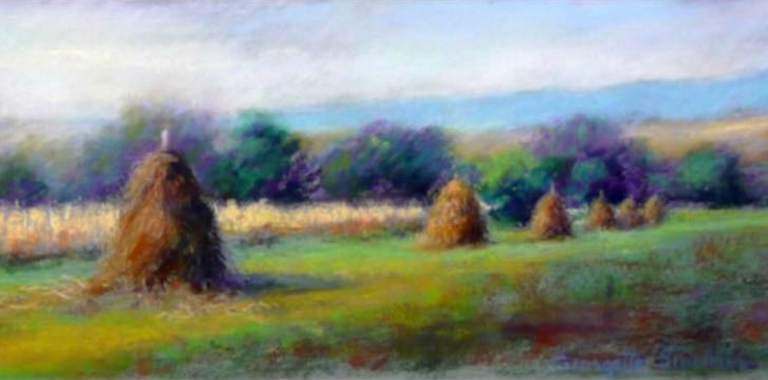 " title="Pastels and Purpose: Georgette Sinclair’s Poetic Landscapes" />
" title="Pastels and Purpose: Georgette Sinclair’s Poetic Landscapes" />
How a Doctor of Audiology from Romania’s Legendary Region Became Roosevelt Island’s Visual Chronicler and New York’s Newest Pastel Master

New York, N.Y.—From her Roosevelt Island studio window, Georgette Sinclair watches light dance across the East River, her pastel sticks poised to capture another vanishing metropolitan moment.
From August 28 to September 21, Sinclair will present her most ambitious
solo exhibition to date at RIVAA Gallery, 527 Main St., New York, NY 10044
But now, as she prepares for her upcoming solo exhibition at RIVAA Gallery and continues her teaching duties at the prestigious National Arts Club, this Romanian-born artist from the legendary region of Transylvania is experiencing a renaissance that bridges her Old World heritage with New World artistic opportunities.
This Doctor of Audiology has carved an unlikely dual legacy: healing ears by day while creating award-winning art that freezes urban poetry in time.
Her pastels transform commuter routines into sublime visual sonnets—haystacks of golden light, lavender-hushed sunsets, and children discovering art beneath the Roosevelt Island Lighthouse. Yet her story has deepened considerably, weaving together threads from the mystical hills of Transylvania, the prestigious halls of Gramercy Park, and the romantic waterways of the French countryside.
The Immigrant Artist: From Transylvanian Roots to the Art Students League
Sinclair’s journey began in the storied region of Transylvania, Romania—that legendary corner of Europe where Gothic castles pierce misty hillsides and ancient artistic traditions run deep.
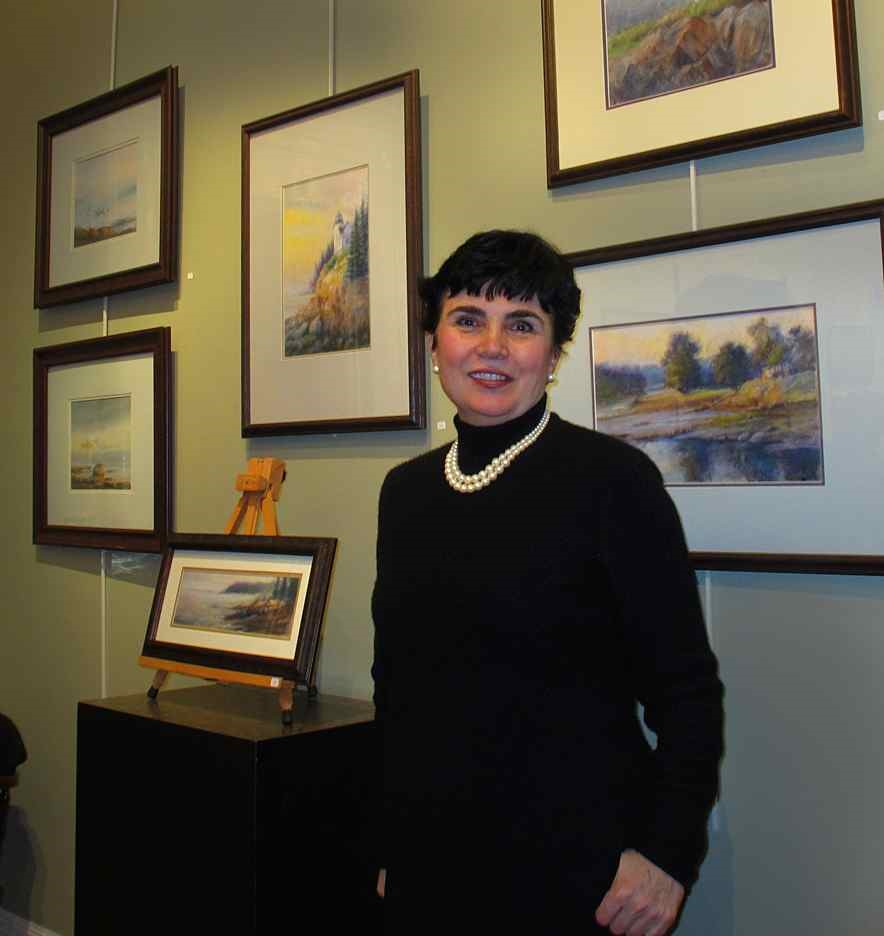
It was here, amid the dramatic landscapes that inspired countless tales and legends, that childhood drawing classes at a public School of Art ignited her passion for capturing the interplay between light and shadow, the tangible and the mysterious.
After immigrating to the U.S., she pursued night classes while earning a Master of Science and Doctoral Degree in Audiology (Au.D.)—a rigorous scientific foundation that unexpectedly honed her artistic perception.
“Listening deeply shapes how I see light and silence in landscapes,” she reflects, her Transylvanian accent still faintly coloring her words when she speaks of her homeland’s influence on her artistic vision.
Her formal training culminated at New York’s prestigious Art Students League, studying under Richard Pionk and John Foote before mastering pastel techniques with Elizabeth Mowry in France.
This transcontinental education forged her signature approach: Impressionistic spontaneity grounded in disciplined observation, with an almost mystical sensitivity to atmosphere that harks back to her Transylvanian origins.
Where some see ordinary sidewalks and riverbanks, Sinclair finds “fragments of time” worthy of preservation—a philosophy echoing American Tonalism and French Impressionists, but filtered through the haunting beauty of her Romanian heritage.
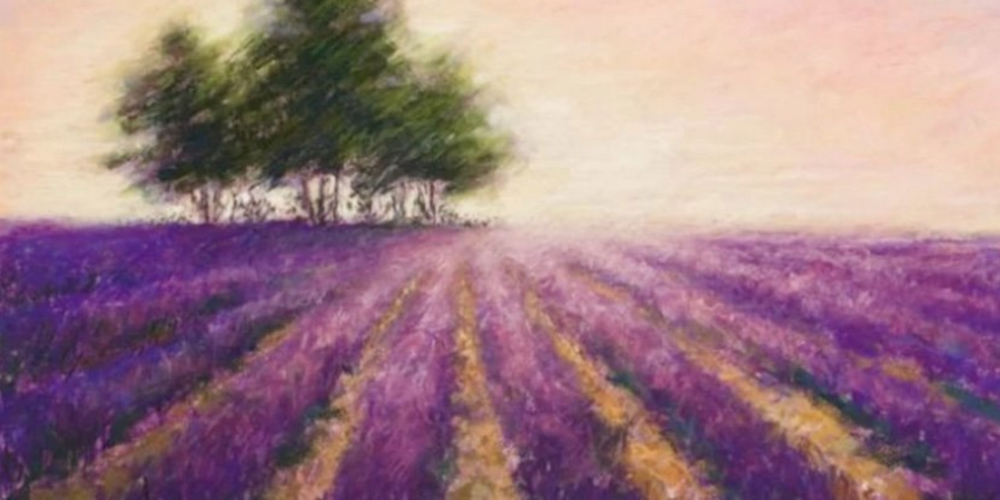
A New Chapter: Teaching at the National Arts Club
Since April 2024, Sinclair has embarked on a significant new phase of her career as an instructor at the Pastel Society of America studio, housed within the historic National Arts Club at Gramercy Park. This prestigious Manhattan institution, with its storied halls and Gothic Revival architecture, provides the perfect backdrop for Sinclair to share her mastery of pastel techniques with a new generation of artists.
Her teaching style reflects both her scientific precision and her intuitive understanding of light—qualities honed through decades of professional audiology work and deepened by her recent artistic pilgrimages. Students at the National Arts Club studio learn not just technical skills, but Sinclair’s unique approach to “listening” to landscapes, a synesthetic method that draws from her dual expertise in both hearing and seeing.
“Teaching has revealed new layers of my own understanding,” Sinclair explains from her Gramercy Park classroom, gestures animated as she demonstrates how to build luminous atmospheric effects with soft pastels. “When I help others discover how to capture light, I rediscover it myself.”
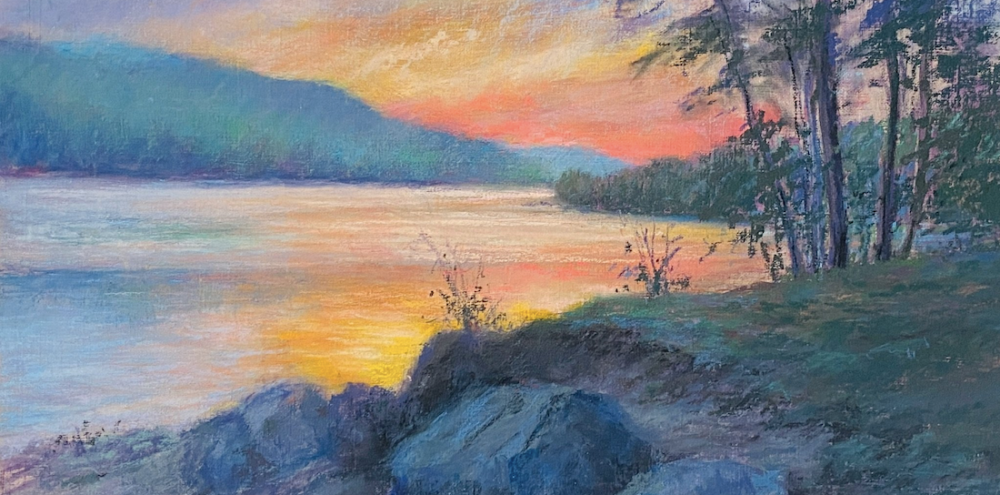
Following the Masters: A Pilgrimage to the Barbizon School
Sinclair’s artistic journey took a profoundly meaningful turn with her recent participation in “Painting and Barge,” an immersive painting expedition to France that followed in the footsteps of the early French Impressionists and the renowned Barbizon School.

This wasn’t merely a painting trip—it was a pilgrimage to the very locations where masters like Jean-Baptiste-Camille Corot, Théodore Rousseau, and Jean-François Millet lived, painted, and revolutionized landscape art.
Traveling with a carefully selected group of serious artists, Sinclair experienced the same qualities of light and atmosphere that inspired the Barbizon masters to abandon their studios for the direct observation of nature.
The trip included extended stays in the Forest of Fontainebleau, where the Barbizon painters established their open-air practices, and visits to the actual homes and studios where these artistic pioneers worked.
“Standing where Corot captured his silver-light dawns, working at my easel in the same meadows where Millet painted his gleaners—it was transformative,” Sinclair reflects.
“The light in France carries a different frequency than American light. My ear for auditory subtlety helped me detect these visual frequencies that the Impressionists were responding to.”
The barge component of the journey allowed the artists to drift slowly through the French countryside’s waterways, experiencing the landscape as a continuously unfolding panorama—much like the way the Impressionists learned to see nature as a series of momentary effects rather than static scenes.
For Sinclair, whose Roosevelt Island work often captures the flow of river light and urban rhythm, this experience deepened her understanding of how water and light collaborate to create constantly shifting compositions.
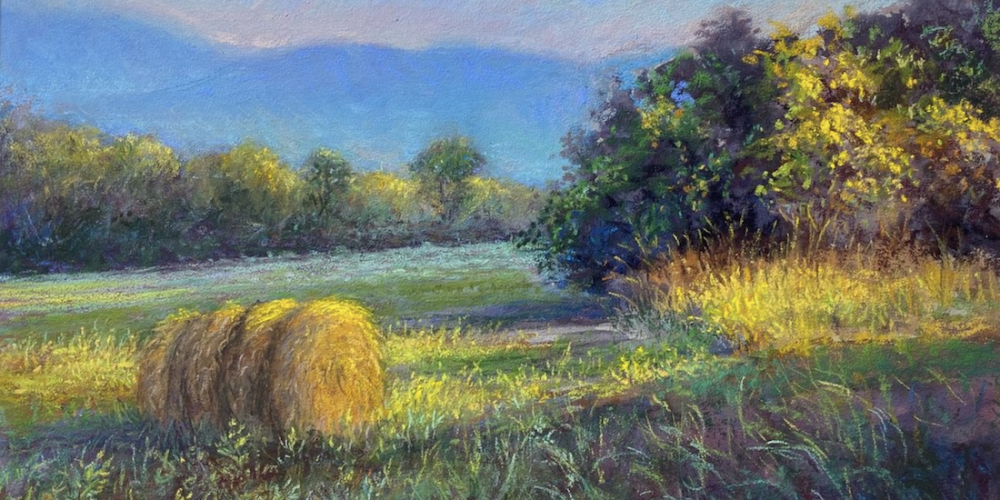
Roosevelt Island: Muse and Manifesto
When Sinclair arrived on the two-mile-long island in 1987, its kinetic beauty struck like revelation. “I am still fascinated today by the beauty surrounding us as much as the first time I stepped on the island,” she confesses. Twenty-three years later, her April 2023 solo exhibition “The Island of Art“ at the Octagon Gallery became a visual love letter to her adopted home, but it was also a preview of the artistic evolution that her French sojourn would inspire.
The show’s centerpiece—a girl sketching the Roosevelt Island Lighthouse—deliberately evoked Mary Cassatt‘s tender studies of artistic awakening. Through 21 pastels, Sinclair framed commuters as ballet dancers, frost patterns as lacework, and window reflections as layered dreams. “Windows fascinate me endlessly,” she explains. “They’re thresholds between inner worlds and the city’s pulse.”
Now, enriched by her Barbizon experience and her teaching role at the National Arts Club, Sinclair’s Roosevelt Island work has taken on new dimensions. Her latest pieces incorporate lessons learned from the French masters about capturing atmospheric conditions and the subtle variations in natural light throughout the day.
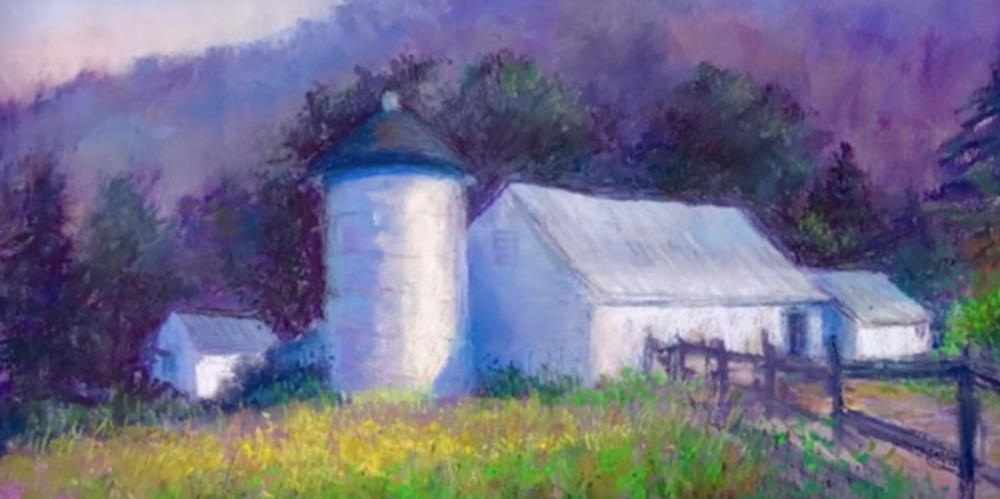
The Science of the Sublime
Sinclair’s audiology career profoundly informs her artistry. Just as she diagnoses auditory nuances, her landscapes dissect visual frequencies: the cobalt resonance of twilight, or how winter light vibrates differently on snow than on asphalt. This methodical sensitivity earned her leadership roles at America’s oldest art institutions. Since 2001, she’s been an active member of the Salmagundi Club, serving four years as third Vice President and shaping exhibitions as an Art Committee stalwart.
Her technical mastery shines in temporal layering—a signature technique developed through workshops at Woodstock School of Art and the Hudson River Valley Art School, and refined during her recent French studies. By building translucent pastel strata, she embeds multiple moments within single compositions: a raincloud’s shadow simultaneously contains the memory of sunlight and promise of clearing skies.
This approach, influenced by both her scientific training and her immersion in Impressionist techniques, creates works that seem to pulse with life. Her students at the National Arts Club learn to recognize what Sinclair calls “visual harmonics”—the way certain color combinations create resonances similar to musical chords.
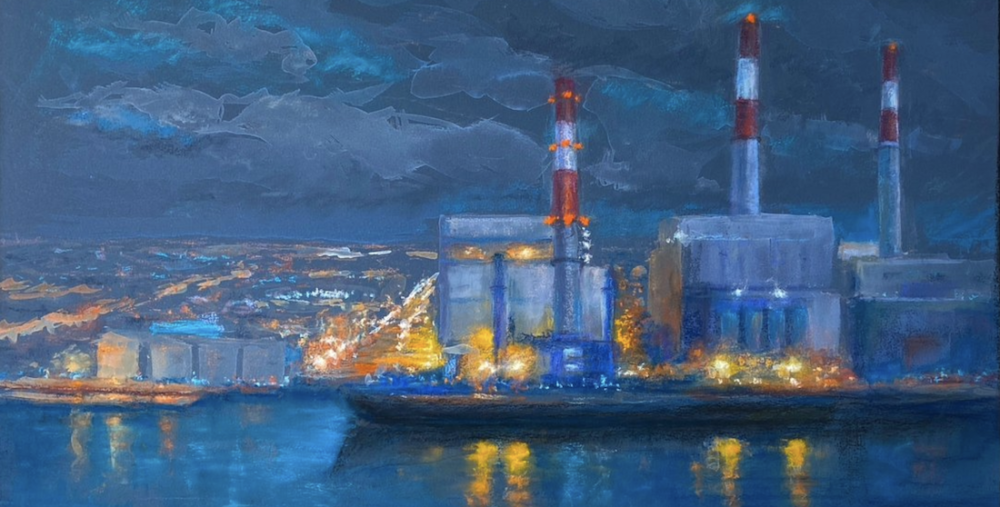
Looking Forward: Solo Exhibition at RIVAA Gallery
From August 28 to September 21, Sinclair will present her most ambitious solo exhibition to date at RIVAA Gallery. This show promises to unveil the fruits of her recent artistic evolution—works that synthesize her Transylvanian sensitivity to atmosphere, her Roosevelt Island intimacy with urban rhythms, her French Impressionist studies, and her ongoing exploration of light’s infinite varieties.
The exhibition will feature new works created since her return from France, pieces that demonstrate how her Barbizon pilgrimage has influenced her interpretation of familiar Roosevelt Island scenes. Visitors can expect to see how a morning commuter ferry, viewed through eyes educated by Monet’s studies of the Seine, becomes something transcendent—a vessel carrying not just passengers, but light itself across the water.
Her website, www.georgettesinclairfineart.com, provides glimpses of this evolving body of work, but the RIVAA Gallery exhibition will offer the first comprehensive view of how a Transylvanian-born artist, trained in American institutions and refined by French traditions, continues to find infinite inspiration in the small island that has been her home for nearly a quarter-century.
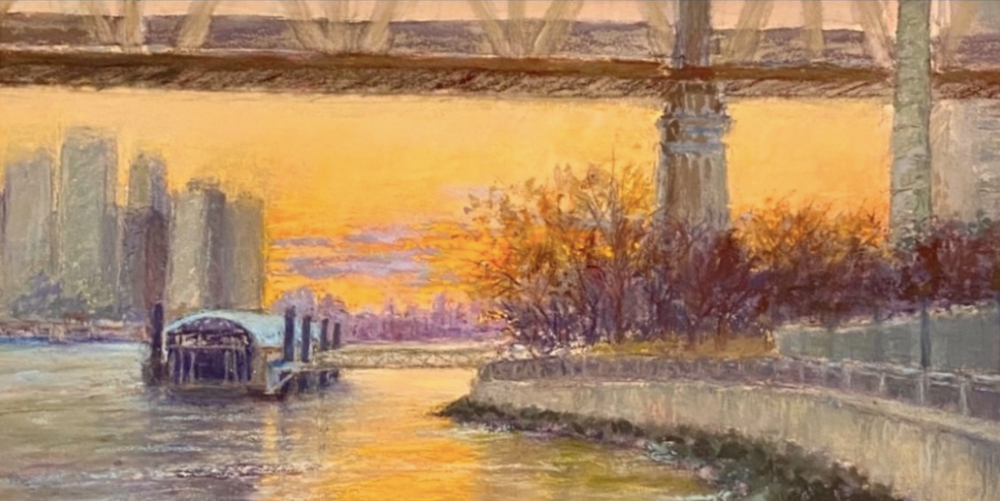
Legacy of Light: The Continuing Journey
Now an elected member of the Allied Artists of America and associate of the Pastel Society of America, Sinclair’s influence extends beyond galleries.

As Treasurer of the Roosevelt Island Visual Art Association (RIVAA) for fifteen years, she championed public art installations that turned the island into an open-air museum. Her role has expanded as she helps organize the very exhibition space where her upcoming solo show will be mounted.
Her latest works incorporate her granddaughters, their small hands reaching through sunbeams—a testament to art’s generational continuity. These intimate family scenes, informed by her studies of how the Barbizon masters depicted rural family life, create bridges between her Romanian heritage, her American present, and the artistic traditions she continues to explore and transmit.
International collectors cherish her pieces not as static images, but as preserved breaths of life touched by European tradition and elevated by scientific precision. As Sinclair phrases it: “I capture moments seizing them forever as sublime experiences nature reveals fleetingly.”
In an age of digital saturation, her analog alchemy—crushed pigment translating transient light, informed by centuries of artistic tradition and sharpened by contemporary urban experience—feels like quiet rebellion.
From the Gothic mysteries of Transylvania to the Gothic Revival halls of Gramercy Park, from the historic studios of the Barbizon School to the contemporary galleries of Roosevelt Island, Georgette Sinclair continues to prove that the artist’s essential task remains unchanged: to help others see the extraordinary beauty hidden within ordinary moments.
Her story is far from complete. With her teaching flourishing, her exhibition approaching, and her artistic vision continuously deepening through new experiences and explorations, Sinclair represents that rare artist who grows more curious and more capable with each passing season. Like the light she captures so masterfully, her artistic journey continues to shift, evolve, and surprise—always beautiful, always changing, always worth watching.
Georgette Sinclair’s solo exhibition runs from August 28 to September 21 at RIVAA Gallery. Her ongoing pastel classes at the Pastel Society of America studio can be attended at the National Arts Club in Gramercy Park. For more information about her work and upcoming exhibitions, visit www.georgettesinclairfineart.com.
Pastels and Purpose: Georgette Sinclair’s Poetic Landscapes (June 20, 2025)
75-Word Summary
Georgette Sinclair merges scientific precision with poetic vision, transforming Roosevelt Island’s ordinary moments into timeless pastel meditations. From her Romanian art school roots to leadership in New York’s prestigious Salmagundi Club, she proves deep observation is the ultimate act of creative courage. Her work invites us to witness the world with renewed wonder.
#UrbanImpressionism #PastelArt #RooseveltIsland #ArtistLife #SalmagundiClub
#RIVAA #ArtAndScience #NYCArtScene #GeorgetteSinclair #LandscapePainting
TAGS: Georgette Sinclair, Roosevelt Island Visual Art Association, Salmagundi Club,
Art Students League, urban landscapes, Romanian-American artists,
pastel techniques, art and science, New York art exhibitions, impressionism
